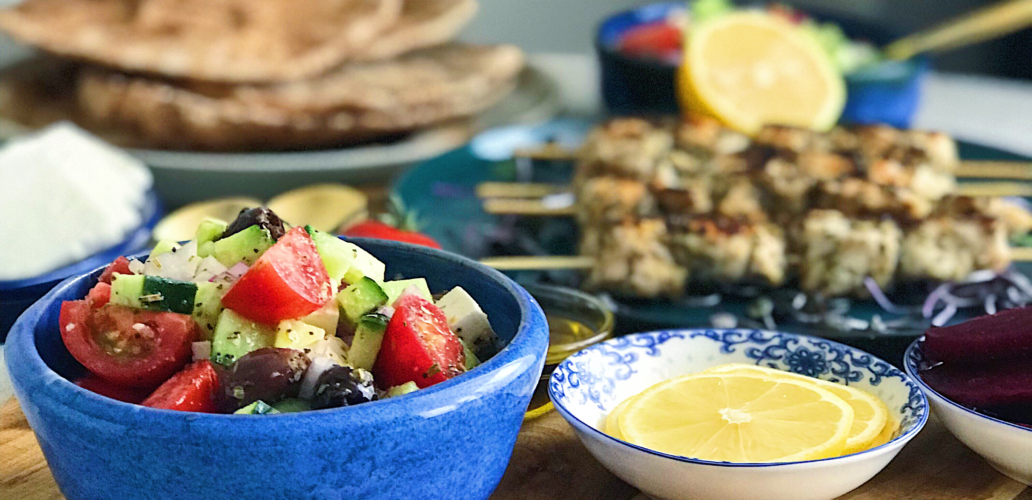
Exploring Global Cuisine with TasteTro
From the grills of the Mediterranean to the tandoors of India, TasteTro has a little something to offer everyone. Our global cuisine spice blends and recipes showcase the vast flavor options available to TasteTro explorers. We wanted to take the time to speak to some of the global cuisines we are covering with the launch of the TasteTro Spice System.
Portugal
With the cool, moist air of Porto to the hot dessert-like climate of Lagos, Portugal has a phenomenal food culture that dates back to the 15thcentury when spice trade routes were beginning to form. As the Portuguese empire began to expand to South America, the coasts of Africa, India and South East Asia, Portuguese food culture began to expand in itself. The addition of spices and exotic ingredients from newly established colonies began to change the face of Portuguese food. Hot chilis, paprika, bay leaves and garlic were some of the aromatics used in Portuguese cuisine and are still used to this day. They can be seen in classic dishes like chicken piri-piri or feijoada.
Italy
Italy’s cuisine is described as simple, fresh and only uses four main ingredients to comprise a dish. Its roots date back to the 4thcentury after the fall of the Roman Empire. With Neapolitan pizza from Naples and risotto from Milan, the country’s cuisine is vastly different from region to region. Northern Italian food has Germanic and Roman roots while the south has Arabic and Mediterranean influence that can be seen in dishes such as lasagna. Italian cuisine is heavily herb based and uses very little spice. Classics that use a healthy amount of herbs such as Bolognese sauce or chicken parmigiana were the recipes that we opted for when we were creating the first 100 recipes.
France
With one of its cities being named the food capital of the world, France is no stranger to the culinary scene. Each region cultivates and produces its own unique edible goods. From duck in the Perigord, to butter in Brittany, this country is full of excitement when it comes to explore flavours on your palette. The French are well known for using a magnitude of different herbs in their cooking. From thyme, parsley, rosemary and chervil, there is nothing herbs cannot deliver on when it comes to French cooking. Spices are less used but when they are, they are showcased and highlighted. For example, the classic pain d’epices spiced bread coming from Reims is the perfect showcase of black pepper, nutmeg, star anise and cinnamon.
America
When we think about the all-American diet, we think of hot dogs, cold beer and fried chicken. America may not have an old, deep-rooted food culture like the other countries listed in this article, but what it does have is a beautiful mix of different influences from Mexico, France, Germany, Italy, Great Britain and Africa to name a few. Meals that have now been named classics in America such as hot dogs and hamburgers actually have a great deal of German influence. The beloved Chicago deep-dish pizza or even the New York style pizza are both based on the Italian version of Neapolitan pizza.
Industrialization has played a key role in how food in America has been shaped. The United States was one of the early adopters of convenience foods bringing on board a variety of different enhancements on natural products. As a lot of these foods have made life easier for many, they’ve also brought on a slew of adverse health effects. The American recipes that we’ve decided to showcase come from a place of tradition but also health. Even our version of fried chicken is still baked in the oven.
India
Known for its vast use of spices in its cuisine, India has a deep and rich history when it comes to food. The Silk Road spice routes played a large role in the development of cuisine and the spices used in India. Turmeric, cardamom, black pepper and mustard were introduced at around 3000 BCE and were added to many vegetarian dishes at the time. With the settlement of new comers from Arabia and central Asia in later years, meat and rice dishes were introduced. The most prized dishes were biriyani based.
Mexico
Mexico’s food history dates back 9000 years where the first agricultural communities started during the Aztec empire. Maize was cultivated and used in various forms along with beans, avocados, tomatoes, tomatillos, vanilla, agave, wild turkey and chilis. Once the Spanish conquered and settled on the North American continent during the 16thcentury, new foods such as domesticated animals (beef, chicken and pork), rice and dairy products were introduced. African and Asian cuisine influenced Mexico as slaves were being sent to ‘New Spain’ at the time. Each region of Mexico has its own unique cuisine based on the ingredients that grow in that region. With that, there are some traditional recipes that are widespread throughout the country such as mole.
We hope that you enjoy the 50 different spice blends and 100 recipes we’ve chosen to showcase in our product launch. As we grow, the addition of more spices and herbs from our base of 20 will allow us to create more spice blends and accompanying recipes. Let the adventure begin!
